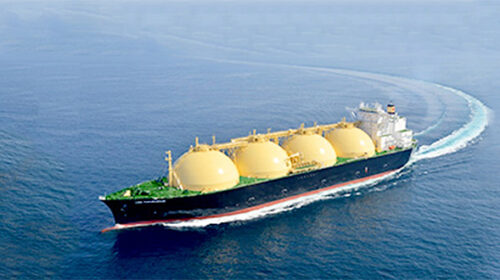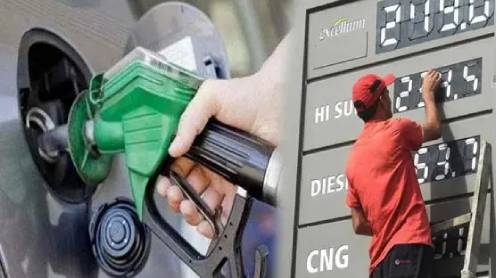Asian demand for LNG is being hampered by sky-high prices of LNG cargoes due to intensifying competition from Europe, which is working around the clock to reduce its dependence on Russian pipeline gas supply.
Europe is now the top destination of record-high U.S. LNG exports, while price-sensitive developing economies in the Asia Pacific are steering clear of the spot market and switching to coal and oil products as the price of LNG is unsustainable for them.
The European resolve to cut reliance on Russian energy, starting with gas, will keep LNG demand and spot prices elevated for years to come, analysts say. This, in turn, will slow the growth of Asia’s LNG imports compared to estimates from before the Russian war in Ukraine.
Europe Becomes Top LNG Destination Market
Europe’s natural gas and power crisis at the end of 2021 had already made the continent the preferred choice of spot LNG cargoes, months before Putin invaded Ukraine and upended global energy flows. Dozens of tankers with liquefied natural gas from the United States were heading to Europe in December 2021, where the gas and energy crisis had pushed regional LNG prices way above the Asian LNG benchmark and 14 times higher than the U.S. Henry Hub price. At least another ten LNG cargoes were diverted from Asia to Europe.
The top five countries of destination for U.S. LNG exports in January 2022, a month before the Russian invasion of Ukraine, were the UK, France, Spain, and Turkey, followed at a distant fifth by South Korea, the U.S. Department of Energy said in its latest LNG Monthly in mid-March with data for January.
U.S. LNG exports hit an all-time high record in January, per EIA data, and the largest share of those exports headed to Europe.
Then in February, Putin’s war in Ukraine made Europe rethink its gas dependence on Russia and prompted the European Union to seek independence from Russian fossil fuels “well before 2030, starting with gas.” Diversification of gas supply, with a hike in LNG imports, is a key near-term pillar of that plan.
At the end of last month, the EU and the United States signed a pact under which America will boost LNG supply to Europe to help it replace at least part of Russian pipeline gas supply.
“The extra 50 bcm/year offered by the US would only cover about a third of the 155 bcm/year of imports from Russia that EU leaders want to replace. But in the context of a larger European strategy to find alternative supplies of gas, both pipeline and LNG, and to curb demand, US exports could make a significant contribution,” Ed Crooks, Vice-Chair, Americas, at Wood Mackenzie, says.
Asian Demand Growth Stalls As Prices Spike
For the short and medium-term, European LNG demand is set to be strong, keeping global spot prices elevated and drawing cargoes to Europe at the expense of Asia. Growth in LNG demand has shifted in recent months to Europe from Asia.
Asia is still the largest market for LNG imports, but its purchases in the first quarter of 2022 fell by 10 percent compared to the same quarter of 2021, per data from WoodMac cited by The Wall Street Journal. Major markets such as China, Japan, and India saw LNG imports dropping by 11 percent, 14 percent, and 25 percent, respectively. Asian power generators have been switching to coal from gas, while some industries in India have turned to naphtha or furnace oil instead of the costly natural gas, Wood Mackenzie’s vice president Valery Chow told the Journal.
In a report last month, WoodMac said: “Tightness and uncertainty in the European gas market are driving record-high volumes of LNG to the region, while demand in the rest of the world is slowing down in response to high prices.”
Related: U.S. Drilling Activity Has Risen 60% In One Year
LNG demand in the Asia Pacific region is expected to drop this year, with Chinese demand forecast to remain flat, while growth in Southeast Asian demand will not be high enough to offset the declines in Japanese and Korean imports, according to the energy consultancy.
“Non-APAC imports growth is concentrated in Europe,” Wood Mackenzie said.
The European drive for replacing Russian gas as soon as possible will keep demand growth in Europe high and spot prices elevated through the middle of this decade, analysts and industry players say.
“Europe’s farewell to Russian gas will be a long goodbye; it will take most of the decade for the continent to wean itself from those supplies, which now account for more than 40 percent of its gas imports,” analysts at the European think tank Bruegel wrote in an op-ed in The New York Times last month.
At the same time, price-sensitive buyers in Asia are likely to continue shying away from spot LNG purchases, expecting high prices through 2025.
“The LNG market has been evolving in an unfavorable manner for buyers as the supplies are forecast to be tight during the 2021-2025 period while demand is picking up after the pandemic,” PV Gas, the state firm of Vietnam, said last month, as carried by Reuters.
“This will lead to a strong price rising trend over the next years with no signs of easing in the short term,” says PV Gas.





